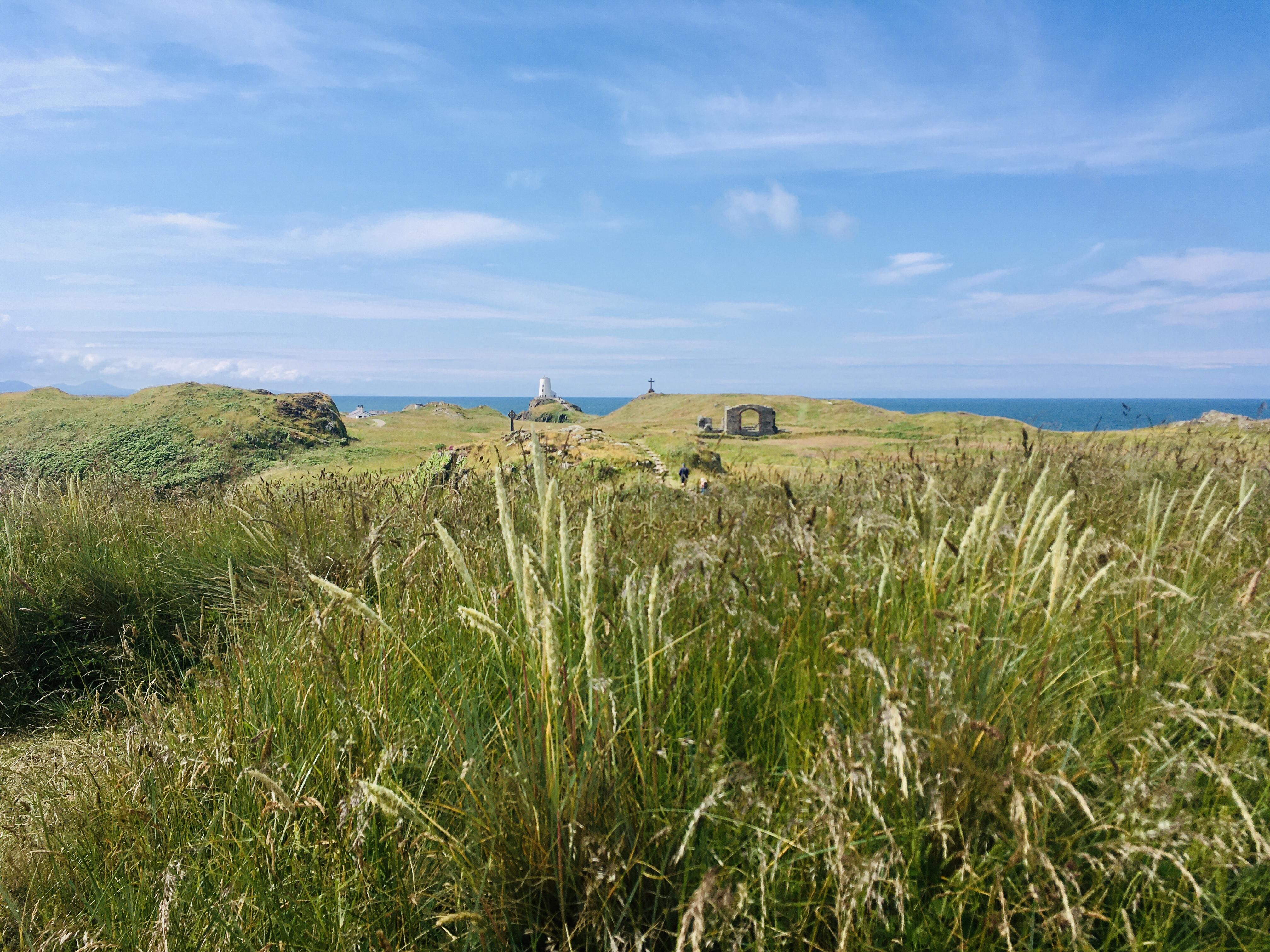St Cadwaladr
Llangadwaladr, Anglesey
Best known as the burial place of King Cadfan of Gwynedd, who died around 625 AD, shortly after the church was established.

Llanddwyn Island (Ynys Llanddwyn) is a magical place.
Llanddwyn Island, Anglesey
Located at the far end of a pleasant beach near Newborough Warren, this narrow finger of land is an ideal picnic site during fine weather, but also an exhilarating place when the winter winds blow. Its rolling dunes, large rock outcrops and mixture of historic buildings makes it an ideal place for an afternoon of exploration.
Llanddwyn Island is named after St Dwynwen, who retreated to the island in the early 5th century after an unhappy love affair. She had fallen in love with a youth named Maelon but her father, King Brychan, wanted her to marry someone else. According to legend, an angel visited her and gave her a potion that healed her loss and turned Maelon into ice.
Dwynwen was granted three wishes: firstly, that Maelon would be thawed; secondly, that true lovers would have their dreams fulfilled; finally, she would never marry. She then devoted her life to God and lived on the island until her death in AD465.
Dwynwen became known as the patron saint of lovers and pilgrimages were made to her holy well on the island. It was said that the faithfulness of a lover could be divined through the movements of some eels that lived in the well. This was done by the woman first scattering breadcrumbs on the surface, then laying her handkerchief on the surface. If the eel disturbed it then her lover would be faithful.
Visitors would leave offerings at her shrine, and so popular was this place of pilgrimage that it became the richest in the area during Tudor times. This funded a substantial chapel that was built in the 16th century on the site of Dwynwen's original chapel. The ruins of this can still be seen today.
From a large information board, take the clear path through the island to the remains of the chapel.
Llangadwaladr, Anglesey
Best known as the burial place of King Cadfan of Gwynedd, who died around 625 AD, shortly after the church was established.
Aberffraw, Anglesey
A 12th century parish church, St Beuno's may have been used as a royal chapel during the early Middle Ages, as the princes of Gwynedd had a court in Aberffraw.
Llanfaglan, Gwynedd
St Baglan stands in splendid isolation in a wonderfully romantic position overlooking Caernarfon Bay reverberating with echoes of the renowned Mabinogion tales.